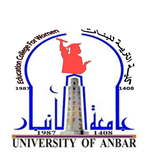
Scientific article entitled Genetic improvement of plants by genetic engineering
Scientific article entitled Genetic improvement of plants by genetic engineering
Genetic engineering: It is one of the modern branches of life sciences through which unwanted genes in plants can be removed and replaced with other genes of benefit, or the possibility of taking a gene from one living organism and planting it in another organism to acquire a desirable trait, and that genetic engineering allows the transfer of genes Among the genetically divergent types, most of the genes of living organisms consist of DNA, which can be separated and rearranged according to human desire, and thus it becomes possible to obtain plants that are superior in their characteristics through genetic engineering, which includes the transfer of certain useful parts of the genetic material from living organisms to other unrelated organisms.
steps of genetic engineering
1- Isolation of the DNA molecules to be transferred to the plant cell
2- Finding a suitable means of transportation, obtaining it in a pure form, penetrating the plant cell and inserting the gene into it. The means of transportation is DNA
3- Finding an appropriate way to cut the foreign DNA molecule to obtain a small piece of DNA that contains the desired gene and transfer it to the plant cell whose characteristics are desired to be improved.
4- Providing a suitable method for linking the foreign DNA segment with the carrier to form the hybrid molecule
5- A means must be provided through which the hybrid molecules resulting from the binding processes can be introduced into the manufactured cell
6- After introduction, the molecules must be distributed in an appropriate manner to select the future cells for the hybrid molecule carrying the desired gene
Applications of genetic engineering in the agricultural field
Many plant breeders were able to make agricultural improvements on many varieties to increase their productivity, improve their quality and produce economical varieties with high productivity, such as Genetic Modified Food, until such varieties have the ability to resist diseases, resist harsh climatic conditions and withstand saline and desert environments. For this reason, advanced laboratories were interested in transferring the genes responsible for the formation of bacterial root nodes from legume crops to other crops of economic importance and making them able to coexist with them. Some amino acids were also produced by microorganisms, which are included in the protein industry for animal feed for the purpose of increasing meat production
The most important areas of agricultural research in which genetic engineering is used
1- Producing plants that are resistant to diseases and insects
2-Production of pesticide-resistant plants
3-Production of plants resistant to fungi
4- Producing plant varieties that have the ability to live in saline and desert lands
5- Producing organisms that resemble one of the parents by cloning, as happens in asexual and vegetative reproduction
Recent trends in the field of genetic engineering to improve plants
1- Gene transfer to pollen
2- Direct injection of DNA into the reproductive organs of the plant
3- The possibility of using genetics
4- The ability to modify the same gene by moving a piece of DNA in the same gene to new sites
5- Considering the viruses that infect plants as different factors in gene transfer
Achievements of genetic engineering in the field of plant genetic improvement
1- Genetic improvement methods in this field depended on intensifying the efforts of scientists in genetic engineering towards Bacillus thurigiensis and symbolized by it (BT). This bacteria produces a protein that kills the larvae of scaly-winged insects.
2- In the field of plant protection from fungi
Although plants contain substances that protect them from bacteria and other microorganisms such as soaps, alkaloids and waxy substances, their resistance is still weak, so the genetic factor responsible for the production of sirsopin protein was isolated from the silkworm butterfly and introduced to potato plants, making it resistant to soft mold bacteria.
3- In the field of atmospheric nitrogen fixation
Although leguminous crops carry in their roots root nodules of bacteria that fix atmospheric nitrogen, which is governed by a set of genes, whether in the leguminous plant or in bacteria, genetic engineering scientists have been able to transfer these genes from a bacterial plasmid to E.Coli bacteria, and they turned into nitrogen-fixing bacteria Therefore, scientists have recently made several attempts to produce root nodules in the roots of grassy plants with the aim of fixing atmospheric nitrogen symbiosis with different types of bacteria. It continues in this direction
Prof. Hamdi Jasim Hammadi
College of Education for Woman - Department of Biology
???????
1. Alberts , B., D. Bray, J. Lewis , M. Raff , K. Roberets and J. D. Watson (1983 ) Molecular biology of the cell . Garland publishing , Inc., New york.
2. Anderson ,W.F., and E. G. Diacumakos,1981. Genetic engineering in mammalian cells.sci. Amer. 245 (1): 60-93.
3. Annicchiarico,(2002) Genotype x Environment interactions challenges and Opportunities for plant breeding and cultivar recommendation, F. A-O, Rome (in press) .
4. Ashikari, M., Sakakibara H, Lin., Yamamoto T., Takashi T., Nishimura A., Angeles E.R., Qian Qian, Kitano H. and Matsuoka M. (2005). Cytokinin oxidase regulates rice grain production . Science 309: 741-745 .
5. Anyanga , W.O., P.Rubaihayo, P.Gibson and P.Okori. (2016). Combining ability and gene action in sesame (Sesamum indicum L.) elite genotypes by diallel mating design . vol.8(11), 250-256.
6. Auerbach , C. (1962) Mutation , an introduction to research on mutagenesis . Oliver and Boyed , Edinburgh .
7. Bailey, B. and Lappe M., editors (2002). Engineering the form Washington , DC : Island press .
8. Banatvala, B., Bell P. and Symonds M. (2005). The research assessment exercise is bad for UK medicine, Lancet : 365-452.
9. Bateson, W. (1909) Mendel's –principles of heredity- Cambridge university press Cambridge .
10. Bauer, M.W. and Gaskell G., editors (2002). Biotechnology- The making of a global controversy , Cambridge : University press.
11. Beazer , S. and E. Freese (1958) Induction of specific mutation on with 5-Bromouracil . proc. Nat. Acad. Sci.(us) . 44 : 112 – 119 .
12. Bello , O.B., S.A.Ige, A.M.Azeez, S.M.Afolabi, Y.S. Abdulmaliq and J. Mahamood (2016) Heritability and genetic advance for grain yield and its component characters n maize (Zea mays L.) Intern. Jo. Of plant Res.2(5):138-145.
13. Becker, H.C. and J. Leon (1988) Stability analysis in plant breeding. Plant Breeding , 101 : 1-23.
14. Bernhard , T., W.Friedt, R.J.Snowdon, B.Wittkop. (2016)New insights into genotypic thermo dependency of cytoplasmic male sterility hybrid barley breeding. . Agr. Res. Sci. 11:8-17.
15. Bender, P. (2002). Plant epigenetics , current biology 12, R 412- R 414 .




